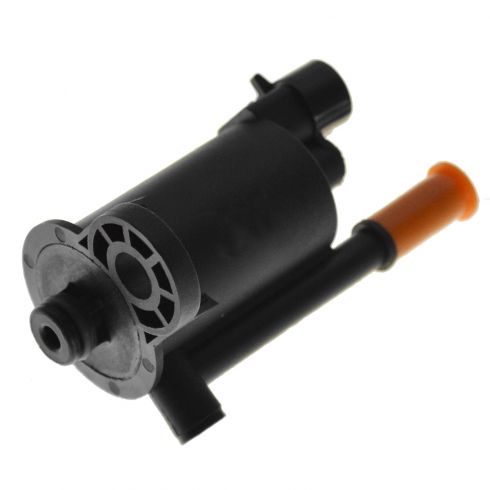An EVAP leak is a fault in the evaporative emission control system (EVAP). How to Find EVAP Leaks with Smoke Pro Diagnostic Leak Detectors. Here are possible causes. Small evap leaks are the hardest to find. Using a smoke machine is very commonly how we find them.
Common EVAP system problems. A common (and easy-to-fix) cause of this is a loose gas cap. Verify that the gas cap is firmly tightened onto the gas tank entry point. It is required under federal law as it ensures your evaporative emission system ( EVAP ) is functioning correctly. Your car may still be covered under.
Since the gas cap is the biggest leak an EVAP system can have first check to see if the cap is tight and seals against the filler neck. Next remove the cap to inspect the cap O ring seal. Depending on the model, the EVAP system can test itself for leaks using different strategies. What Is EVAP System Repair? Your EVAP system consists of primarily a canister for storing vapors, and in most cases, that is the only part that will need to be replaced when it goes bad.
Effective diagnostics and the proper tools are required to locate these leaks. This keeps air pollution. Fortunately, it is easy to avoid problems when you have the right equipment. Check the vacuum hoses which go to the charcoal canister and at the engine.
Modern systems use multiple tests to determine if there is a leak before setting a code. Start by tighten the gas cap and clearing the code. In most cases the code can be clear by disconnecting the car battery for about minutes. There is factory Nissan service bulletin to help diagnose. In most cases, the code can be clear by disconnecting the car battery for about minutes.
EVAP control system has a very large leak such as fuel. Details Check Engine Light Repair and Diagnostic Help. Knowing EVAP system leak symptoms can help you prevent further issue with the car.
Unfortunately, not many car owners understand or realize this. Evap Smoke Machine Tester. Chrysler Town and Country 3. I have small evap leak code on it. I connected smoke machine to the green connector and after smoke testing it I see smoke coming out from the round plastic part which is mounted near the firewall and have only one hose going to it.
Replaced gas cap, replaced purge solenoi smoke machine showed smoke at base of LDP fresh air filter. Replacing the gas cap used to fix the problem, not anymore. Please give me suggestions.
On the manual, I found dozens of possible reasons, but no hint about how to troubleshoot. I took it to dealership and they stated it was the evap canister , so they fixed it supposedly. He said it could be a loose gas cap to a leaky hose or other things.
EVAP related diagnostic trouble codes that turn on your check engine light can be set for a variety of reasons. Some faults are caused by leaks while others can result from blocked lines, faulty sensors, or malfunctioning solenoids. Turns out the test port for the EVAP system is missing the plug that blocks it off from the atmosphere.
The engine light came on. It may be necessary to partially lower the fuel tank to inspect the upper portion of the tank and the EVAP line connections. Start checking under the hood for a cracked rubber vac. Not only are they not approved for EVAP system leak detection – they are not approved for leak detection on ANY automotive system, by ANY car maker!
In an evaporative emission control system, the purge valve works by controlling the amount of vapor from the charcoal canister. In modern cars, the engine computer controls the purge valve. Since the engine computer controls the purge valve, when the engine is not running, the valve closes. While the trouble code may state that there is a “large leak ” in the EVAP system of your GMC Yukon, the actual leak will most likely still look rather small. Prevent unburned fuel from escaping.
Modern EVAP systems can detect small leaks, down to. Since OBD- cars have been fitted with systems for monitoring flow and leaks of fuel vapors, in an effort to reduce emissions. Average failure mileage is 160miles. Just connecting the leak detection device to the EVAP test port or gas filler neck and cranking up the pressure to look for leaks is not the proper way to test the system.
Newest Flow Meter Displays to. Visually inspect the gas cap for any cracks or worn rubber seals. A loose or missing gas cap can actually trigger a malfunction to the computer, producing a code that turns the warning light on.
Cool Smoke EVAP Leak Detection System Part No. Why should you buy from us instead of others? Default action the MIL is illuminate on the firs trip that the diagnostic fails, the MIL will be turned off on the third consecutive trip that the diagnostic passes. Leaks in the system, ca allow vapors to escape into the atmosphere.
We have sold Hundreds of these quality units, we ship days a week, you can be sure to receive your unit in a timely fashion, These are built in the USA not China! RTI Technologies ELF-EVAP Leak Finder: NO Heat and NO Smoke! One-of-a-kind technology utilizes patente safe, non-flammable, smoke-free process to find leaks. Toyota EVAP systems can be a bit confusing to troubleshoot and repair properly.
Some EVAP leaks can be hard to find. But usually “large” leaks can be spotted pretty quick. Here’s the way I’ve been finding them with a simple smoke machine.

No comments:
Post a Comment
Note: Only a member of this blog may post a comment.